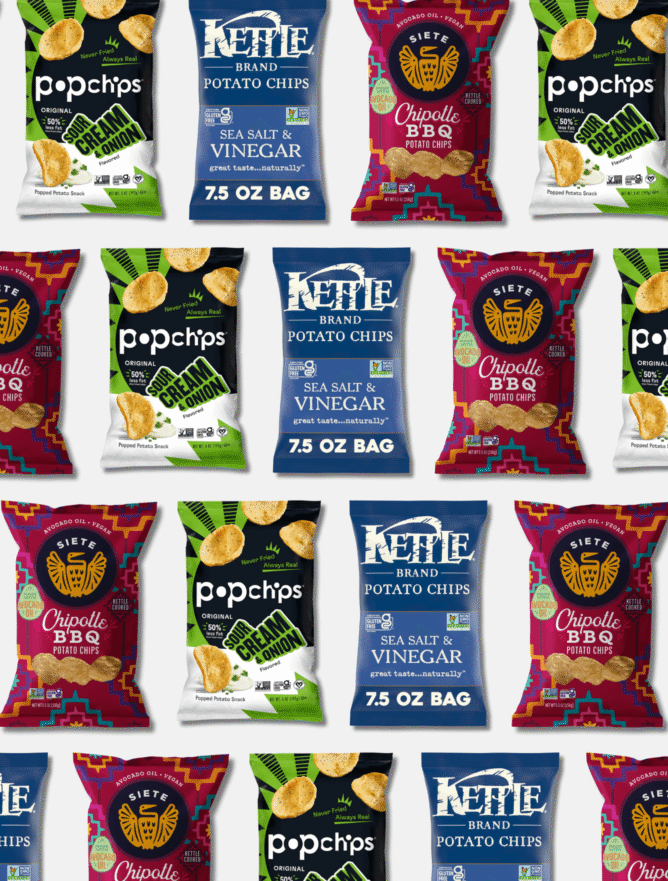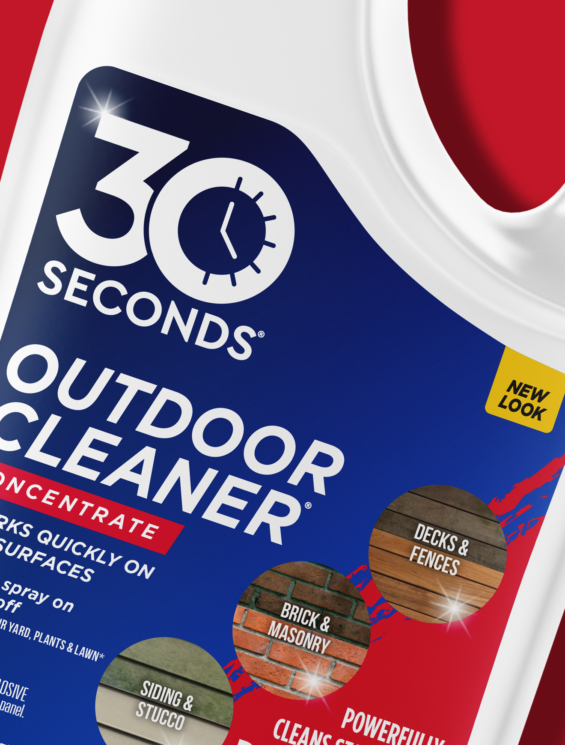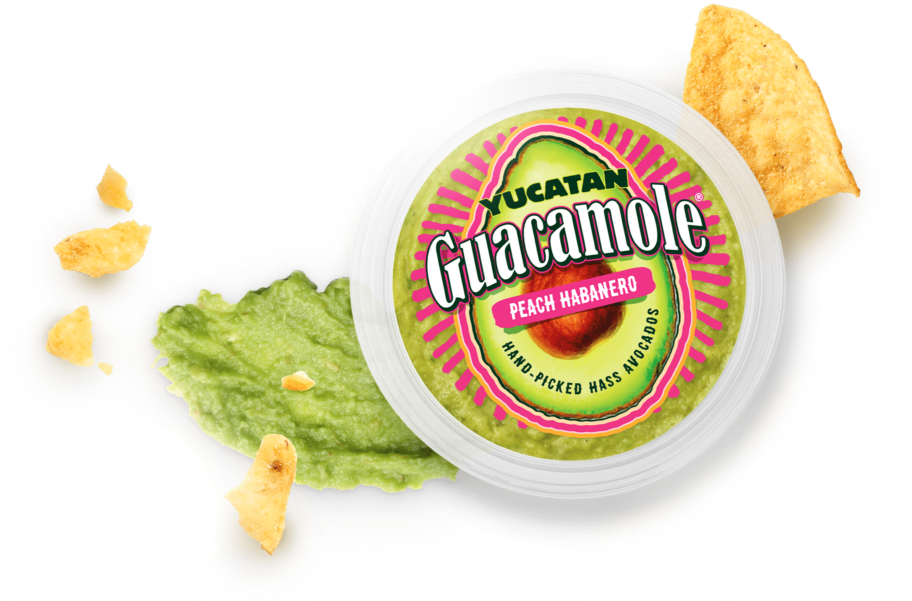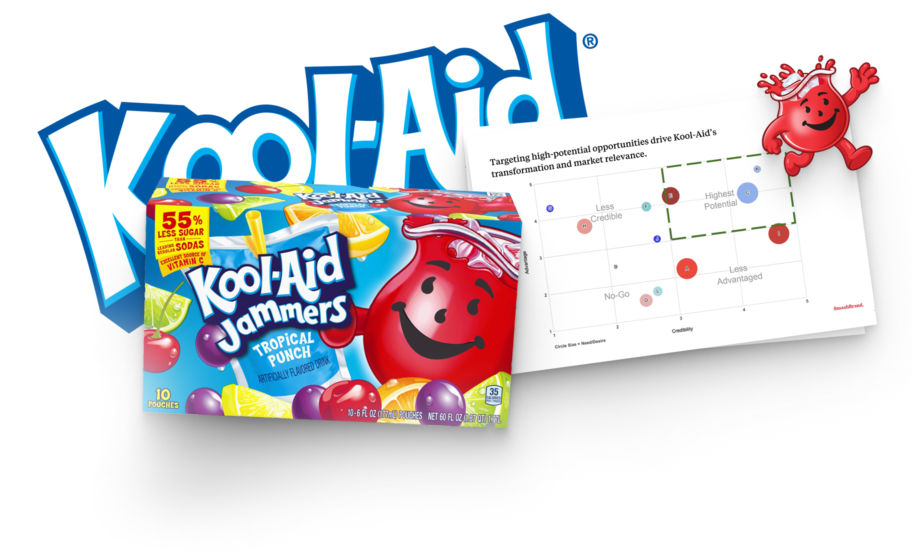DTC may seem like the best channel for commerce, but at some point, every brand must enter into omnichannel commerce by pursuing retail to scale their business profitably. Retail presents more significant packaging challenges than when selling directly to consumers.
This article educates new and DTC brands on the necessary steps to create a shelf-tested, performance-ready retail packaging design. You will learn the difference between retail and e-commerce packaging strategies and why your packaging design must consider your shelf competitors. This article will also guide you on the greater importance of optimizing the packaging experience and embracing the human sense, which we only find in retail packaging.
You will also learn to design in consideration of multiple merchandising placements and how to create a fool-proof retail box design strategy. Lastly, you will explore the importance of shelf-testing your packaging against that of your competitors.
Packaging design guide for retail vs. e-commerce.
The first step to successfully executing in retail is understanding how retail packaging design differs from direct-to-consumer (DTC) packaging. Let’s examine other packaging differentiators between retail and e-commerce packaging designs.
Shelf competitors.
As big as your online business is, existing brand awareness is not enough to carry you through a successful retail campaign. Unlike e-commerce, a potential customer can use both hands to compare your product against the competition.
Surprisingly, ecommerce giants have yet to consider this with a distraction-free pop-up model. Yes, they have comparison charts, but these do not stimulate buyer consideration as effectively as a shelf grab.
Unlike Google shopping, retailers cannot place you in the 100th position, meaning you’re out if you do not perform! Once you are out of a retailer, finding shelf placement in the future is nearly impossible.
You get one shot at success in the retail Store, so you must do what it takes to outperform current and future shelf competition.
In most cases, a retailer will only give you one chance to win over customers. For this reason and many others, the retail packaging design is critical to your success in retail stores.
Packaging experience.
Unlike ecommerce, retail product packaging offers an opportunity to bring your product to life. Most brands cannot achieve this when using standard run-of-the-mill, economically priced, boring packaging. Retail opens the doors to custom packaging as a means of product differentiation.
But there’s the other side of CPG packaging experience, where damaged packaging may be acceptable in the ecommerce model, where you can blame the shipping company; in retail, store managers will either send your product back or look like a poor substitute to your shelf competition.
This two-sided coin of packaging can make or break your retail revenues. Custom retail packaging must stand out, but not in a “what happened” way. Customer experience is crucial for CPG brands seeking to enter the retail channel.
A sense of touch.
While touch fits into the “packaging experience” conversation, the customer’s ability to feel your product is a topic that deserves a separate section.
One of the top three reasons people still shop in retail stores is the ability to touch a product. Until (if ever) the metaverse takes over the CPG industry, your kinesthetic packaging experience either encourages or discourages purchase intent.
Therefore, if you are paying for custom retail packaging, measure its effectiveness based on the visual and kinesthetic stimuli it creates.
Merchandising functionality.
Hopefully, every DTC brand ensures that its product can stand up without falling over. But, not every brand understands the distinction between maintaining a correct position in the retail store versus the consumer’s cabinet.
It’s a good idea to be considerate of your packaging presentation, as your brand may end up on an end cap or featured in a retail display. Your octagon-shaped custom packaging might “look” cool, but will it be a nightmare for retail merchandisers? Does it limit your opportunity for enhanced exposure?
These are all things we must take into consideration.
Retail packaging design trends.
Latching onto CPG packaging trends may lead to industry acceptance, but it does not always equate to improved packaging performance. However, exploring these trends is entirely acceptable in the product packaging design process.
Here’s a look at the current trends in the retail space.
Sustainability.
A hot topic for sure, but while consumers are open to the idea of sustainability, pricing is critically important to the success of a sustainable packaging design.
A brand offering a sustainable product and packaging may collect a 20% pricing premium, but can they command a 70% pricing premium? The impact is sure to change.
Sustainability is part purpose but also part marketability. Therefore, promoting sustainable product packaging must be as creative as your efforts to stand out in the consumer packaged goods (CPG) category. Many brands fail with a sustainable model because they lack a clear distinction in communicating their sustainable brand story.
Minimalism.
Minimalist packaging designs remain popular among consumers who seek a simpler lifestyle. However, only specific categories and consumer demographics align with this less-is-more initiative.
Minimalism will always be a topic of discussion in packaging, as brands that adopt this design theme are bucking the consumerist marketing trend. Still, there are too few unicorns to make the removal of necessary design elements and purchase drivers the norm.
But removing the precise definition of minimalism allows brands to take a “more minimalistic” approach compared to their shelf competitors. If a category exists where mediocre purchase drivers flood the front panel, limiting to three may be a strategic move.
Personalization.
Not me, not me, not me, me!
That’s how it looks when consumers’ eyes scan the shelf. They may not be saying this directly, but every “no” conveys that the product is not the best fit for them.
With this understanding, retail packaging design has always and will continue to demand personalization. However, technological advances enable brands to create packaging that resonates with a specific customer.
Recent advances in smart packaging allow us to take personalization off the package and into the digital world. Consumer perceptions suggest that this is a positive development, creating a need for connected packaging to be integrated into a brand’s retail packaging strategy.
How to design retail packaging.
There is a process for creating a retail package design that both retail buyers and consumers will appreciate. At SmashBrand, we have an extensive list of steps to ensure our clients achieve retail packaging performance.
While we cannot reveal the secret sauce of our packaging design agency, here’s a look at the packaging design process.
Start with strategy.
Success doesn’t happen accidentally, which is particularly true for retail packaging design. You can build a strategy that starts the packaging design process by combining brand insights, agency expertise, and consumer research. In strategy, you will review the following:
- Packaging trends: Reviewing the latest packaging design trends (such as sustainable packaging) is necessary to identify market penetration opportunities and what may have become white noise.
- Target audience: Identify the target market and consider their preferences, demographics, and psychographics. The packaging design should appeal to their tastes and preferences.
- Brand personality: Determine the brand personality and ensure the packaging design reflects it. For instance, if the brand is playful and fun, the packaging should reflect this.
- Brand identity: Review the consumer’s current understanding of the brand and its identity in the marketplace.
- Unique Selling Proposition: Identify and highlight the product’s unique selling proposition, showcasing it in the packaging design. A USP could be the product’s features, benefits, or quality.
- Competition: Analyze the competition and ensure that the packaging design stands out. It should be distinctive, unique, and memorable.
- Materials: Select packaging materials that align with the brand’s values and the target market’s preferences. For example, if sustainability is a key value, the packaging materials should be eco-friendly.
- Purchase Drivers: Identify the messages that matter most to your target audience, and then find a way to differentiate yourself from competitors who rely on these purchase drivers for their success.
- Typography and Color: Select typography and color schemes that align with the brand theme and appeal to the target market. The right color and typography will help to create a cohesive visual identity.
- Branding elements: Ensure the packaging design incorporates branding elements, including logos, slogans, and taglines, to maintain a consistent visual identity. These elements help to create brand recognition and brand recall.
Additional considerations that impact your long-term success in the retail channel.
- Packaging Experience: Consider the practical aspects of the packaging design, such as ease of use, durability, and convenience.
- Regulatory compliance: Ensure the packaging design complies with labeling requirements and safety standards.
- Budget: Consider the budget for custom retail packaging to ensure it aligns with the brand’s projected profit margin.
Once this data is in place, you can shift to the packaging design.
Shift to design.
With the packaging design brief in hand, the design team gets to work. A graphic designer must have the capability to provide various versions to the client for preliminary feedback on the direction of their designs. During this conversation between the agency and the brand, it’s essential to recognize the importance of avoiding subjectivity that could interfere with the packaging design process.
After presenting the preliminary designs and eliminating those that are not aligned with the brand’s expectations, the graphic designer will refine the design concepts to meet the brand’s expectations. The concepts will undergo subtle changes in graphic design and messaging. An example of this is showcasing flavor freshness over the flavor profile.
Now, it’s time for the designs to undergo concept testing.
What is concept testing?
Concept testing in packaging design is a market research approach used to evaluate the attractiveness and efficacy of proposed package designs. It entails presenting numerous graphic design concepts to customers in drawings, mock-ups, or digital renderings and soliciting input on their packaging preferences, perceptions, and behaviors.
- Concept testing aims to uncover design features that resonate with the target market and modify the design in response to feedback.
- Concept testing ensures that the final packaging design is both appealing and practical, aligning with the brand’s objectives and the target market’s preferences.
- Concept testing is essential to the package design process because it reduces the risk of investing in a design that customers may not receive well.
A graphic designer or a packaging design agency will make informed judgments about enhancing and optimizing the design by soliciting input early. The effort invested in concept testing yields more successful product launches and improved customer satisfaction.
Refine and test for performance.
Recognizing that you are not competing against yourself when placed on the store shelf, we determine “effective packaging” based on its performance relative to the competition. Package design testing includes shelf performance testing, which ensures that you and the retailer are confident that your product has the potential to succeed in their stores.
At SmashBrand, our proprietary version of purchase intent testing proves brand performance and revenue increases.
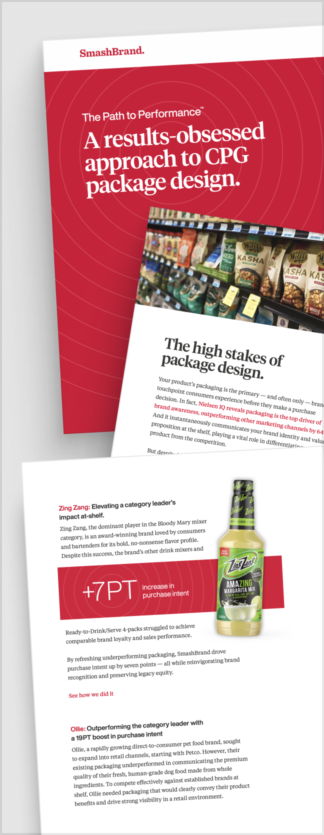
Path to Performance™
Taking a results-obsessed approach to CPG package design.
Discover how SmashBrand’s proprietary process, rooted in scientific principles, informed by data, and validated by your target audience, eliminates the guesswork from package design and delivers guaranteed results.
Design retail packaging guaranteed to perform.
Want A Best Selling Brand? More than a packaging specialist, we become your brand partner, helping you maximize your ability to reach your target customer in a retail store. Book a time to discuss your branding and packaging design projects with our team.
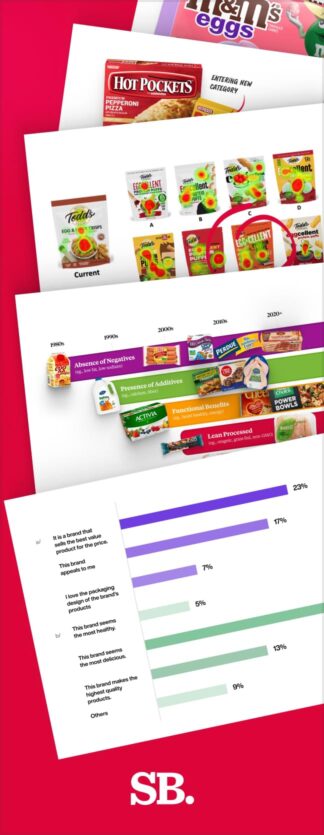
Nice Package
Don’t miss out on our monthly newsletter Nice Package!
Each month, we deliver a data-driven newsletter directly to your inbox, unpacking a critical topic in the FMCG & CPG industry.
"*" indicates required fields
Subscribe to
Nice Package.
A monthly newsletter that unpacks a critical topic in the FMCG & CPG industry.
Free Resource.

CPG product repositioning guide.
Explore the five undeniable signs your CPG product needs repositioning along with strategies for leveraging consumer insights for a guaranteed market lift.
Learn More About CPG product repositioning guide.
